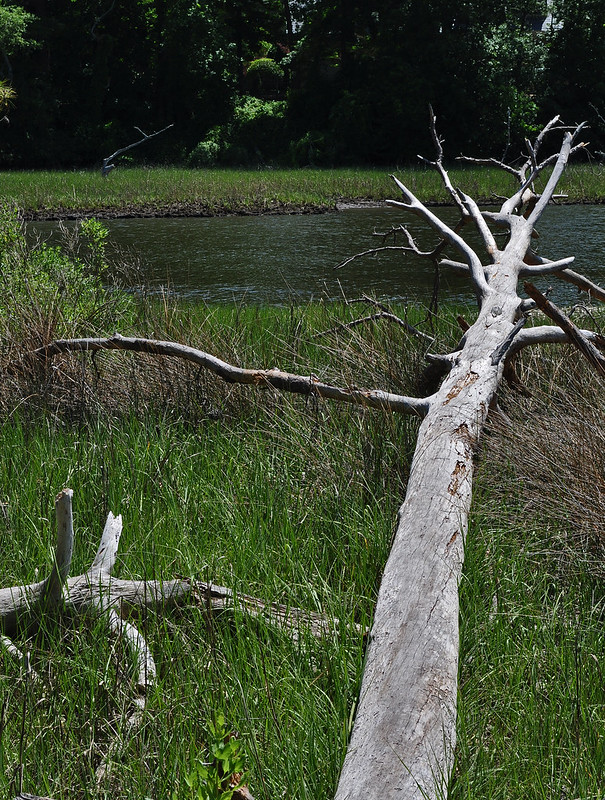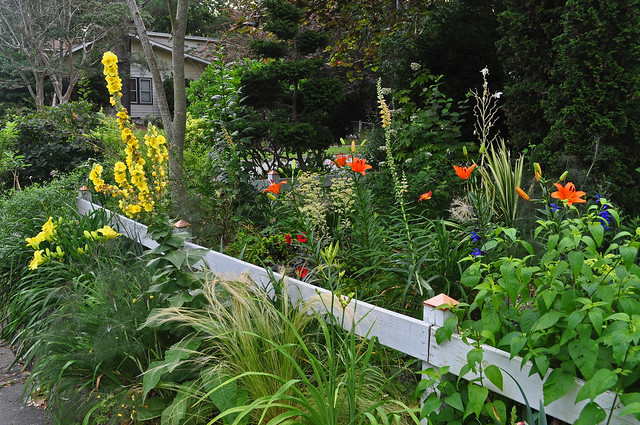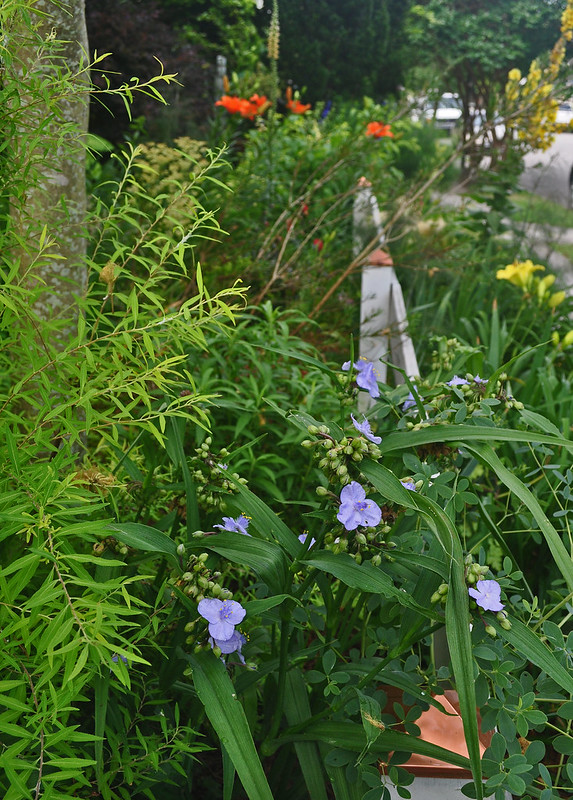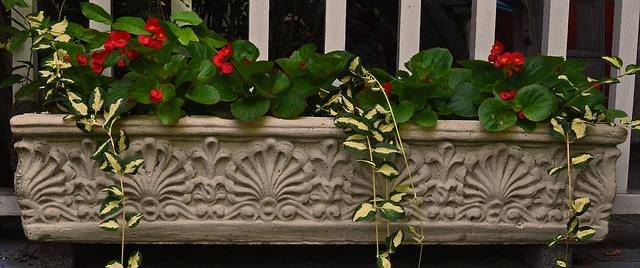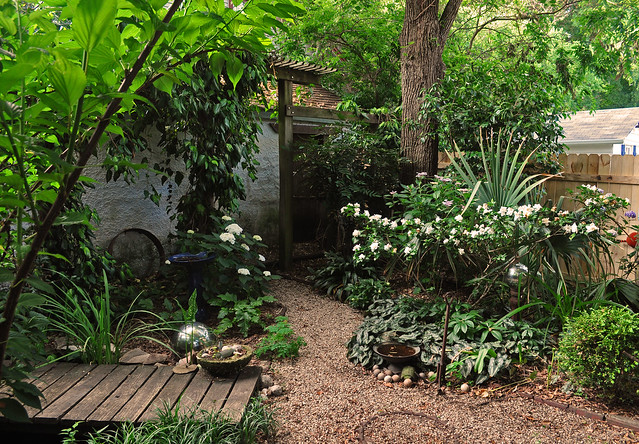One of my favorite weekend activities is to take my bike to nearby Virginia Beach. I usually follow the same route, more or less, and the trip can be anywhere from 15-20 miles, but it is broken into three very distinct parts. The first leg of my journey begins appropriately enough at
First Landing State Park. This is Virginia's oldest state park, and probably due to its beachfront campsites, it is the state's most popular. I don't come for the camping though. I come for the Cape Henry Trail, which runs from the Chesapeake to the Atlantic. The trail is an old dirt road where there are no cars, but there are lots of joggers, hikers, birders, dog walkers, and of course cyclists. It runs through a remarkable maritime forest interspersed with freshwater cypress swamps and salt marshes. It is one of my favorite places on the whole planet.
Once you exit the other end of the park you are at the north end of Virginia Beach, and the second, more residential leg of my trip. Here I cross Atlantic Ave., which until recently was lined with large plantings of oleander (
Nerium oleander). Each summer they bloomed and thrived in an often harsh oceanfront climate. However, two bad winters in a row have decimated them, and on my latest trip I noticed in many areas their remains have been scraped from the soil. I did see a few smaller clumps blooming, but I am not sure if these were new, or some more hardy cultivar.
I usually take the more peaceful Ocean Front Ave. where the houses are tightly packed behind the dunes, and where there is public access to the beach on each block. On busy summer weekends finding a parking spot on these streets has about the same odds as winning the lottery, unless of course you are on a bike. The real estate here is among the most expensive in the city, with some houses occupied year-round, while others are just vacation homes or summer rentals. Every now and then it is possible to catch a glimpse of some modest shingle-clad cottage holding on to another age.




Most of the access points are just boardwalks that take you through wind blown live oaks (
Quercus virginiana) and wax myrtle thickets (
Morella cerifera), and then out over the dunes to the beach. However, one has been turned into a memorial garden for Buff Koch who died at a young age due to breast cancer. When my time here is over, the thought of a garden by the beach is so much more appealing than a plot and a tombstone.

The beginning of Virginia Beach's resort strip, and the third part of my trip, is marked by perhaps its most famous landmark,
the Cavalier Hotel. This place was built in the roaring twenties, and once had its own railroad line that would bring a rich and privileged clientele to enjoy luxury on the beach. Its guest list read like a who's who of mid-century celebrities including musicians, actors, writers, and seven presidents. The old hotel is now undergoing an extensive renovation, but as part of a complicated deal, much of its former grounds will be developed into high-end homes.
Right on the oceanfront, the Cavalier had its Beach Club, which was built in the same Jeffersonian style as the main hotel. On my first bike ride this spring they were busy demolishing the Beach Club, as well as the "new" Cavalier built in the 70's. Plans call for yet another hotel to be built on the Beach Club site, and seeing they had not demolished the old entrance pavilion gave me hope that they planned to incorporate it in the new construction. However, three weeks later it was ready to be pushed into the grinder with all of the other rubble.



Virginia Beach's boardwalk (actually made from concrete) begins just past the Cavalier site. It is designated for pedestrians only, but there is a bike path right next to it, which I usually follow for its whole length. This area has been undergoing a major makeover lately with the most of the old mid-century concrete block hotels giving way to larger and more marketable resort hotels that have national brand recognition. I don't necessarily think this change is a bad thing, as the resort area is a much more colorful and attractive place, but there was something to be said for those old independent places. I began my own hotel career here at the Windjammer Motor Lodge, bulldozed years ago to make room for a Marriott. Along with all the newer hotels has come more oceanfront restaurants and drinking places, attractive landscaping, and some fun sculptures. With or without these upgrades, the boardwalk has always been one of the best places in the area for people watching.

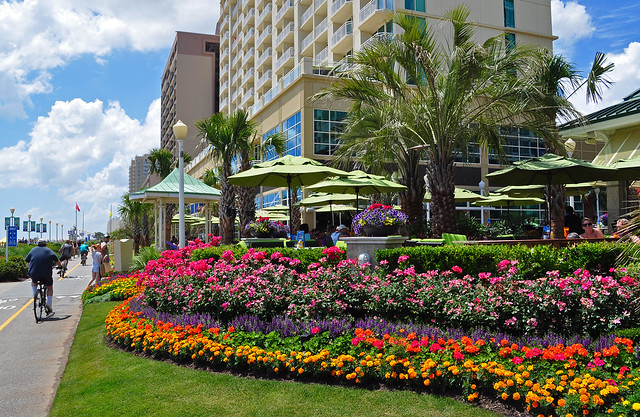








Don't these palms below look healthy? That's because they were recently planted. The past two winters have not only taken their toll on oleanders, but also on a good number of the palms. The hotels and the city have planted many palms along the oceanfront, mainly they are using
Sabal palmetto, which is borderline cold hardy here, but handles the salt fairly well. After so many looked so bad this year, the city set out to replace them. I was contacted by a local columnist to give my thoughts on the use of palms at the oceanfront. We spoke about creating an atmosphere that would appeal to tourists in an environment that is always harsh from sand, salt, and wind, made even more difficult in an unusually cold winter. We spoke of using natives vs. exotics, annuals, perennials, and hardy plants. I jokingly mentioned that many of those palmettos were expensive annuals this year, because it is the second year in a row they have needed replacing. The columnist agenda was to take the city to task for spending taxpayer money so frivolously, and as happens in the media, my comments were cherry-picked to suit her needs. I'll know better next time.
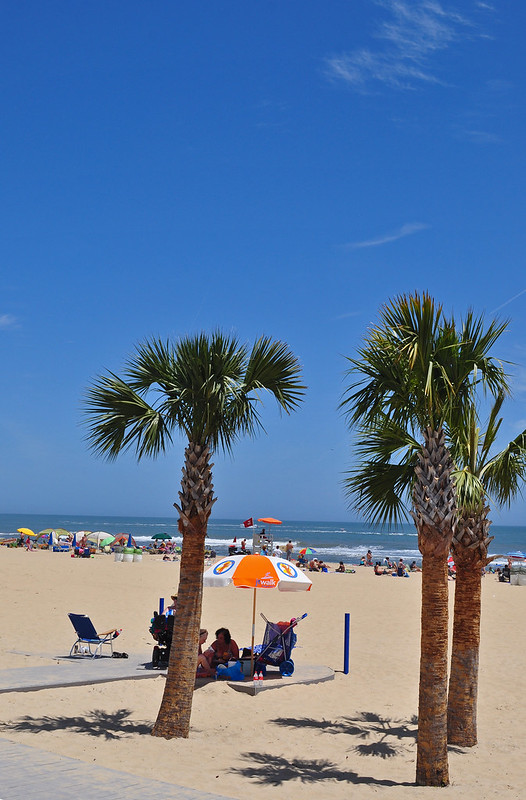
The resort strip, and the boardwalk, end at Rudee Inlet, where boats head out for dolphin watching, paragliding, fishing, or just sightseeing. This is my turnaround point and I now do the whole route in reverse, but not before stopping for a beer and something to eat, and to enjoy the sights and sounds of the oceanfront from a different seat. If I have lived right, the wind will be at my back for the ride home.







